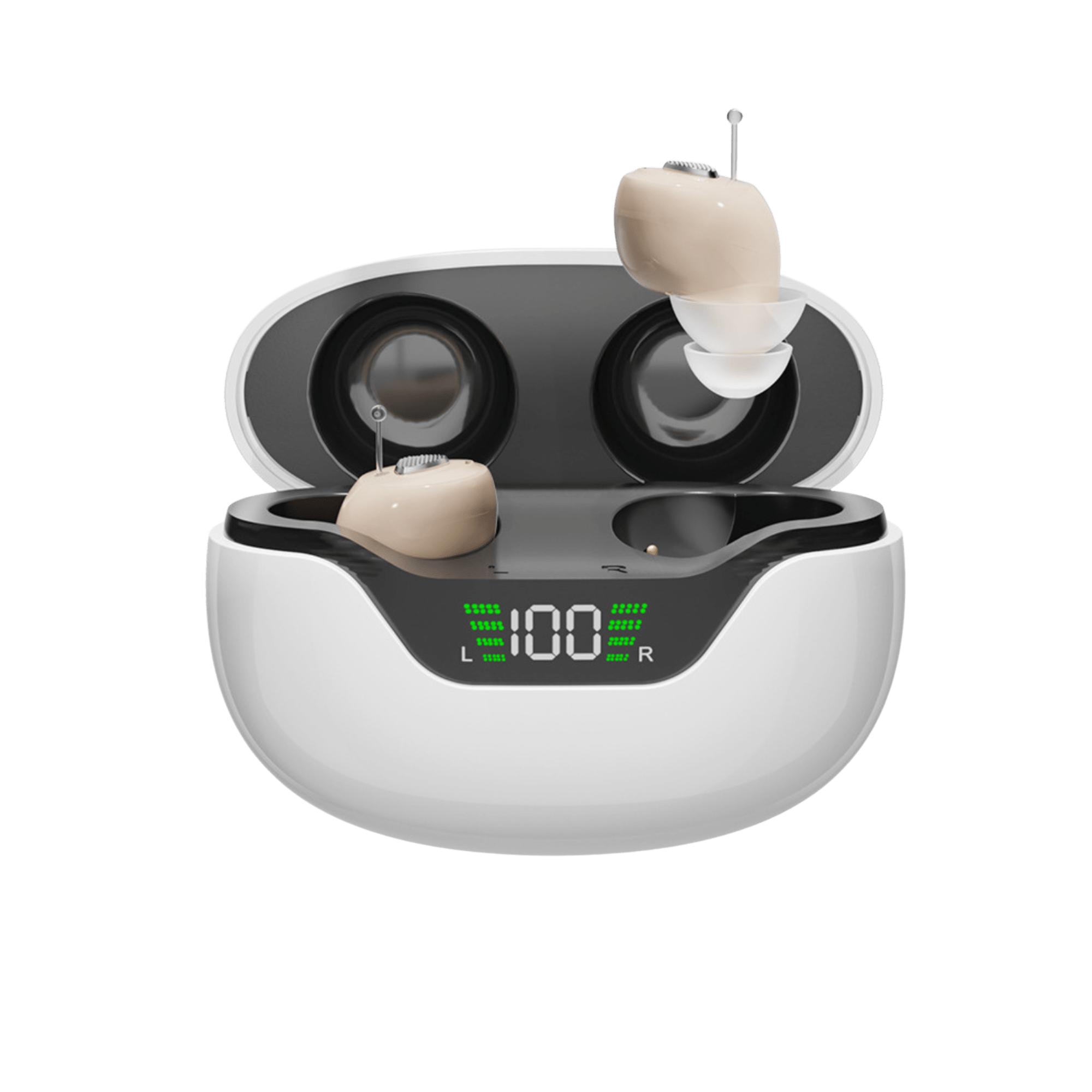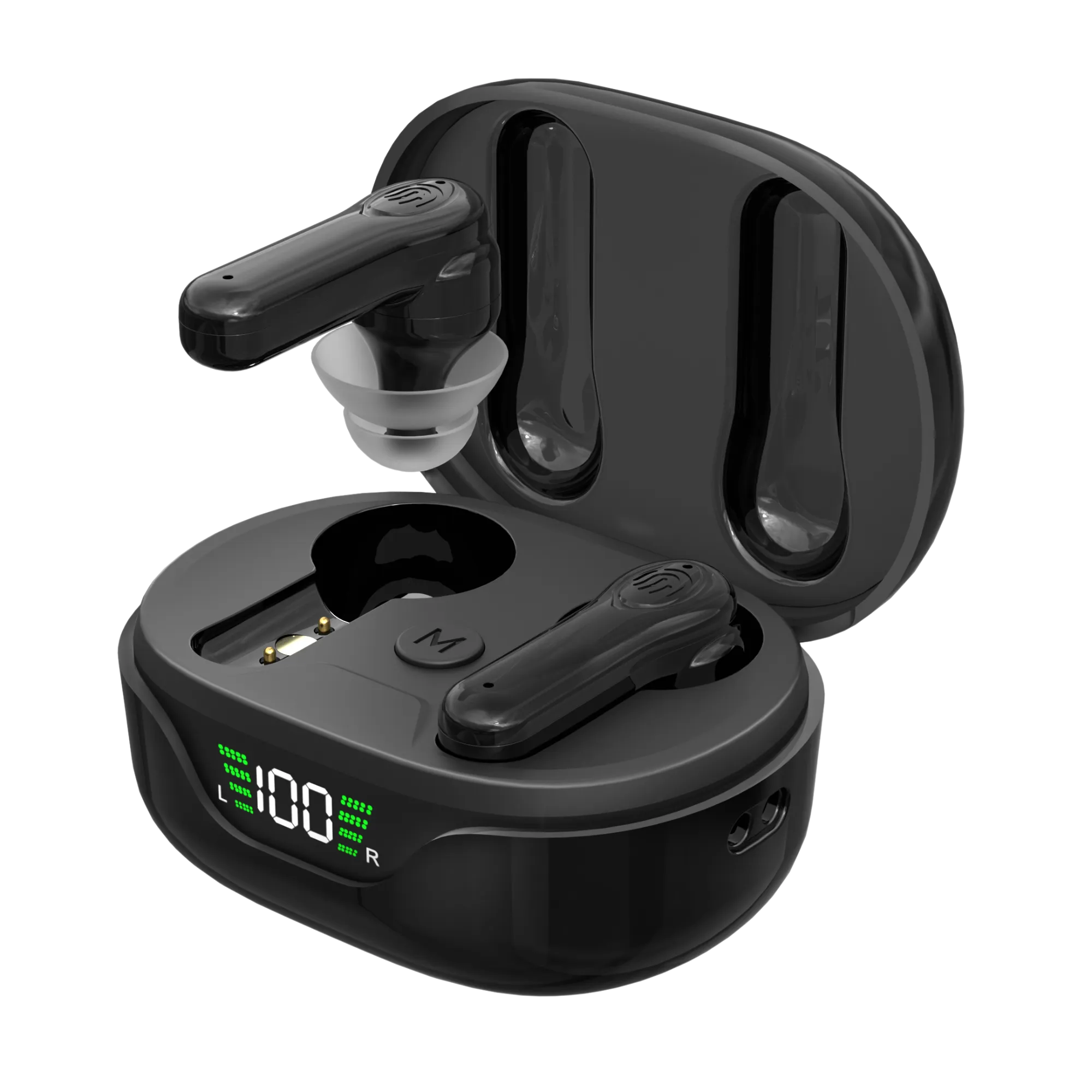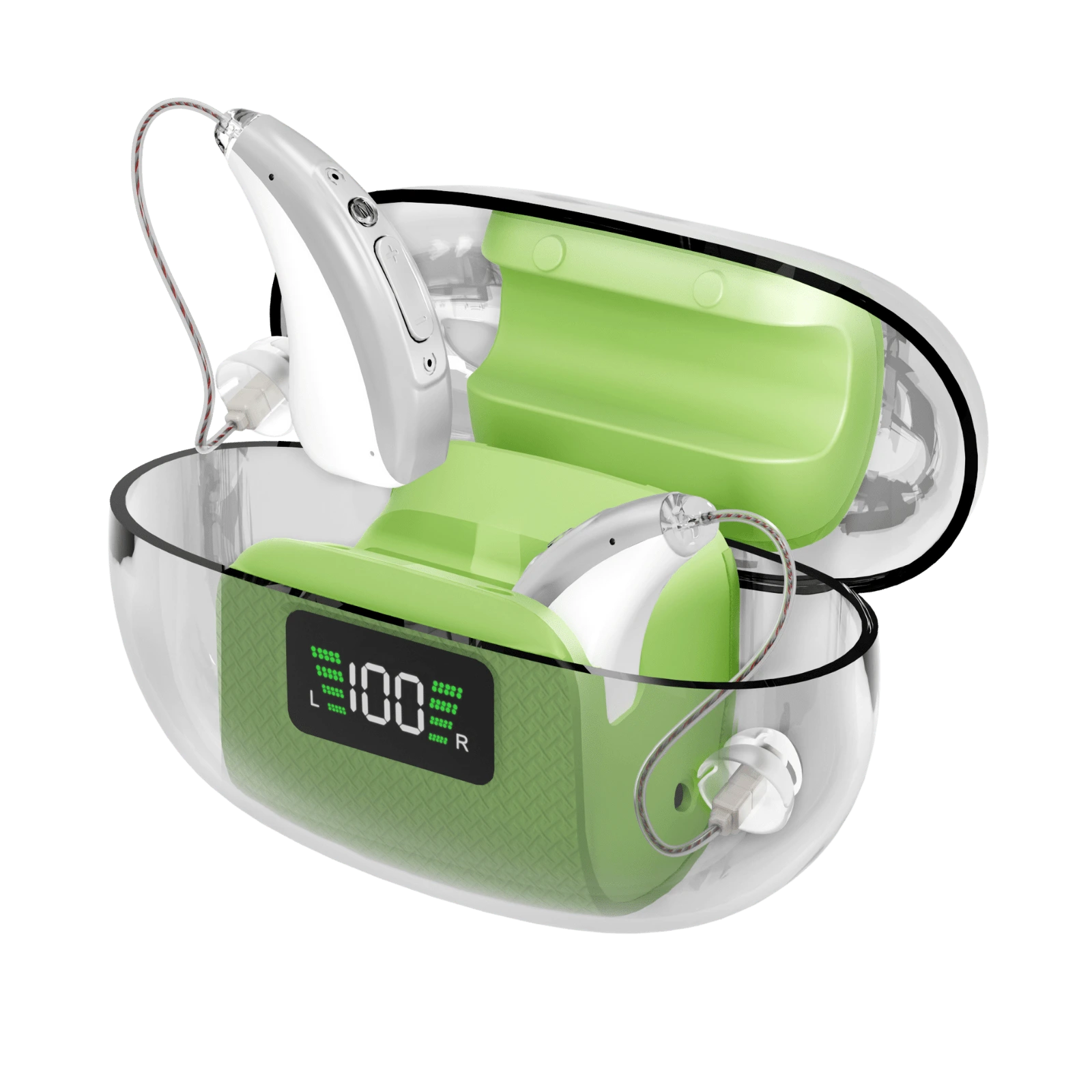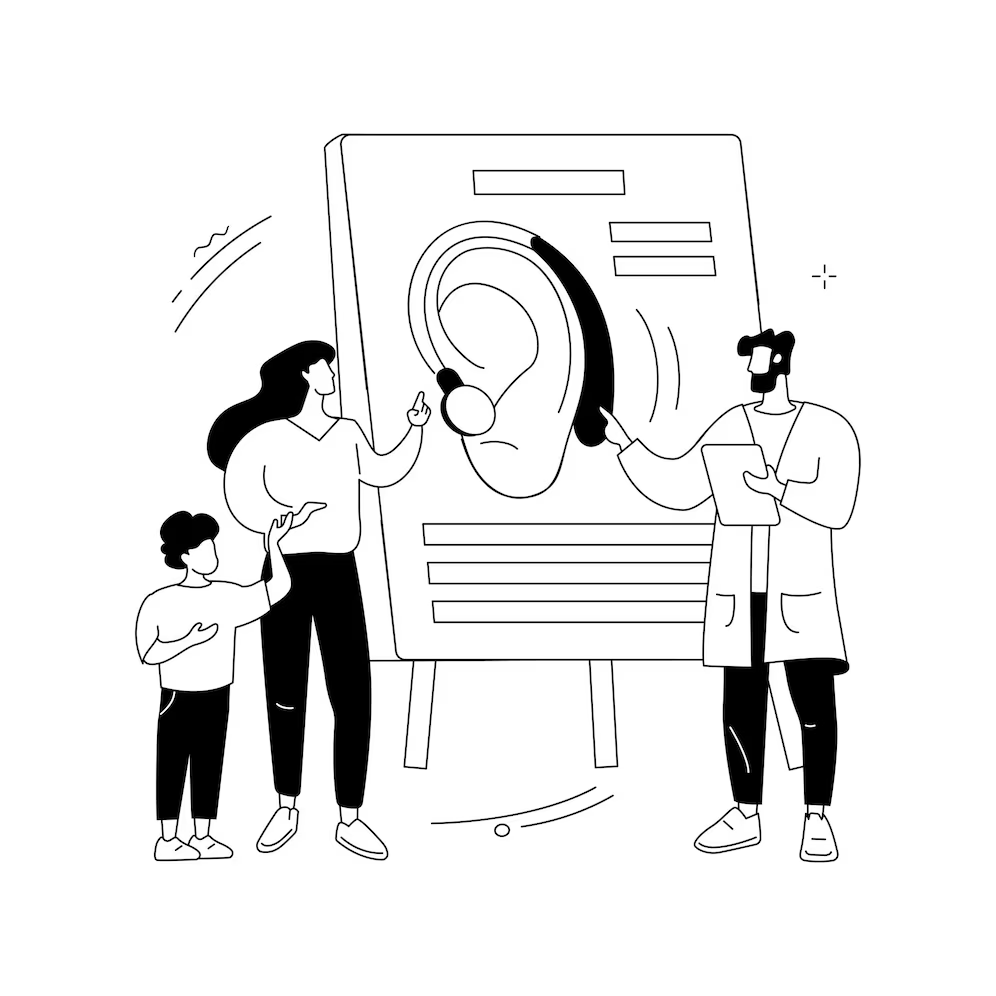Hearing aids are high-tech devices that use a mix of exact engineering, advanced technology, and skilled craftsmanship to help people with hearing loss reconnect with the world of sound. But have you ever thought about how these amazing tools are made? Let's go behind the scenes and look at how hearing aids are made, which is a very complicated process.
How hard it is to make hearing aids
Making a hearing aid is a complicated and careful process that uses cutting-edge technology, quality control measures, and the knowledge of highly skilled professionals. Every step in making a hearing aid is important, from designing and putting it together to testing and personalizing it.
Design and Development
Design and development is the first step in making a hearing aid. This is done by a group of engineers, audiologists, artists, and researchers from different fields working together to make a device that meets the needs of people with hearing loss. The team looks at things like size, comfort, function, and how it looks.
During this process, prototypes are made and put through a lot of tests to make sure that the design meets strict standards for how loud the sound is, how clear the speech is, and how long it will last. The goal is to make a hearing aid that doesn't just work well, but is also easy to use and looks good.
How things are made
The process of making a hearing aid can be broken down into a few key steps:
1. Getting and preparing the materials
The first step is to get the ingredients and parts you need. These include microchips, microphones, receivers, casings, batteries, and other computer parts. Manufacturers get these parts from known suppliers who meet strict standards for quality.
After getting the supplies, they go through a lot of inspections and quality checks to make sure they meet the requirements.
2. Put together electronics
The electronic system is a very important part of making a hearing aid. During this process, mechanical parts are carefully placed on a circuit board using special equipment. Microchips, microphones, amplifiers, and other parts are soldered onto the circuit board, which is the heart of the electrical system in a hearing aid.
During this step, automated quality control systems are used to find any problems or flaws in the electronic assembly. This makes sure that the hearing aid will work well and consistently.
3. Enclosure Manufacturing
The enclosure, also called the casing, is the hearing aid's outer shell. It is where the computer parts are kept. Most enclosures are made from high-quality materials like metals or plastics that last a long time.
Injection molding is used to make the enclosure. In this process, molten material is poured into a mold cavity, where it cools and hardens into the desired shape. This process makes sure that the hearing aid case is always the same size, shape, and quality.
4. Last Meeting
In the last step of assembly, the electrical parts and the case are put together. Skilled workers carefully put the circuit board and other parts into the case, making sure that everything lines up and fits right.
During this stage, the hearing aid goes through more quality checks, such as tests of how it works and checks for any visual flaws. Technicians also make sure that the hearing aid meets the needed specifications and programming parameters.
5. Testing and setting up
Once the hearing aid is put together, it goes through a long process of testing and adjusting. This means putting the device through a number of quality control checks to make sure it works well enough to meet certain standards.
Technicians test the sound quality, measure the frequency response, and check the correctness of the amplification. They also adjust the hearing aid so that it fits the wearer's specific hearing needs and is programmed to make sounds louder based on the person's hearing loss profile.
6. Customizing and making something unique
Hearing aids often need to be adjusted so that they fit and feel best for the person who wears them. This could mean making custom earmolds or earpieces based on the wearer's ear impressions.
Also, hearing aids can be changed to fit the tastes and lifestyle of the person who wears them. Individual needs can be met by adjusting and programming things like the volume control, program settings, and wireless connection.
7. Packing and Getting It Out
After the hearing aids have been tested, calibrated, and customized, they are put in boxes and ready to be sent out. Usually, packaging comes with user instructions, tools for cleaning, and storage cases.
The hearing aids are then given to authorized hearing care workers, who fit, program, and help people who use them. These professionals are very important because they make sure that hearing aids are properly fitted and adjusted for each person's specific hearing needs.
Conclusion
Hearing aids are made with a careful mix of cutting-edge technology, exact engineering, and skilled craftsmanship. Every step is important in making a device that helps people with hearing loss live better lives, from the design and development part to the final assembly and calibration.
Manufacturers of hearing aids make devices with better sound amplification, clearer speech, and personalized features by carefully buying materials, putting together electronics, making cases, and using strict quality control measures.
By learning about the complicated steps that go into making a hearing aid, we can better appreciate the skill and work that goes into making these amazing tools. The result is an ode to human creativity and has changed the lives of people with hearing loss by letting them hear sounds again.
How hard it is to make hearing aids
Making a hearing aid is a complicated and careful process that uses cutting-edge technology, quality control measures, and the knowledge of highly skilled professionals. Every step in making a hearing aid is important, from designing and putting it together to testing and personalizing it.
Design and Development
Design and development is the first step in making a hearing aid. This is done by a group of engineers, audiologists, artists, and researchers from different fields working together to make a device that meets the needs of people with hearing loss. The team looks at things like size, comfort, function, and how it looks.
During this process, prototypes are made and put through a lot of tests to make sure that the design meets strict standards for how loud the sound is, how clear the speech is, and how long it will last. The goal is to make a hearing aid that doesn't just work well, but is also easy to use and looks good.
How things are made
The process of making a hearing aid can be broken down into a few key steps:
1. Getting and preparing the materials
The first step is to get the ingredients and parts you need. These include microchips, microphones, receivers, casings, batteries, and other computer parts. Manufacturers get these parts from known suppliers who meet strict standards for quality.
After getting the supplies, they go through a lot of inspections and quality checks to make sure they meet the requirements.
2. Put together electronics
The electronic system is a very important part of making a hearing aid. During this process, mechanical parts are carefully placed on a circuit board using special equipment. Microchips, microphones, amplifiers, and other parts are soldered onto the circuit board, which is the heart of the electrical system in a hearing aid.
During this step, automated quality control systems are used to find any problems or flaws in the electronic assembly. This makes sure that the hearing aid will work well and consistently.
3. Enclosure Manufacturing
The enclosure, also called the casing, is the hearing aid's outer shell. It is where the computer parts are kept. Most enclosures are made from high-quality materials like metals or plastics that last a long time.
Injection molding is used to make the enclosure. In this process, molten material is poured into a mold cavity, where it cools and hardens into the desired shape. This process makes sure that the hearing aid case is always the same size, shape, and quality.
4. Last Meeting
In the last step of assembly, the electrical parts and the case are put together. Skilled workers carefully put the circuit board and other parts into the case, making sure that everything lines up and fits right.
During this stage, the hearing aid goes through more quality checks, such as tests of how it works and checks for any visual flaws. Technicians also make sure that the hearing aid meets the needed specifications and programming parameters.
5. Testing and setting up
Once the hearing aid is put together, it goes through a long process of testing and adjusting. This means putting the device through a number of quality control checks to make sure it works well enough to meet certain standards.
Technicians test the sound quality, measure the frequency response, and check the correctness of the amplification. They also adjust the hearing aid so that it fits the wearer's specific hearing needs and is programmed to make sounds louder based on the person's hearing loss profile.
6. Customizing and making something unique
Hearing aids often need to be adjusted so that they fit and feel best for the person who wears them. This could mean making custom earmolds or earpieces based on the wearer's ear impressions.
Also, hearing aids can be changed to fit the tastes and lifestyle of the person who wears them. Individual needs can be met by adjusting and programming things like the volume control, program settings, and wireless connection.
7. Packing and Getting It Out
After the hearing aids have been tested, calibrated, and customized, they are put in boxes and ready to be sent out. Usually, packaging comes with user instructions, tools for cleaning, and storage cases.
The hearing aids are then given to authorized hearing care workers, who fit, program, and help people who use them. These professionals are very important because they make sure that hearing aids are properly fitted and adjusted for each person's specific hearing needs.
Conclusion
Hearing aids are made with a careful mix of cutting-edge technology, exact engineering, and skilled craftsmanship. Every step is important in making a device that helps people with hearing loss live better lives, from the design and development part to the final assembly and calibration.
Manufacturers of hearing aids make devices with better sound amplification, clearer speech, and personalized features by carefully buying materials, putting together electronics, making cases, and using strict quality control measures.
By learning about the complicated steps that go into making a hearing aid, we can better appreciate the skill and work that goes into making these amazing tools. The result is an ode to human creativity and has changed the lives of people with hearing loss by letting them hear sounds again.





